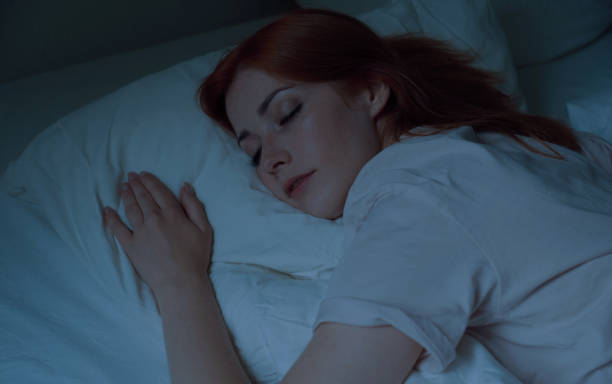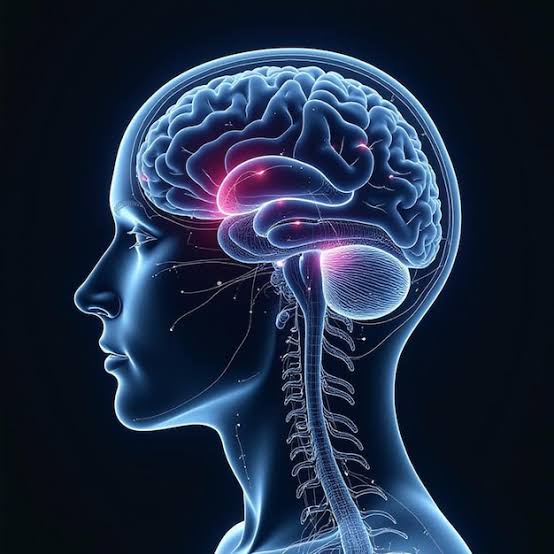Few things in human attraction spark as much curiosity and cultural fixation as male fascination with female breasts. From ancient fertility figurines carved in stone to modern media saturated with images of cleavage, the female chest has captivated human attention across cultures, time periods, and continents. But why? What is it about breasts that draws the male gaze so powerfully and persistently?
Is it purely sexual? A matter of biological instinct? A byproduct of culture? Or could it be something even deeper—an evolutionary adaptation rooted in human bonding and survival?
This article takes a deep and engaging look into the complex interplay of evolutionary biology, developmental psychology, neuroscience, cultural history, and sexual behavior to unpack this enduring question: Why are men so drawn to breasts?
The Evolutionary Origins of the Breast
To begin understanding male attraction to breasts, we must start at the level of human evolution. In the animal kingdom, very few species have permanent, prominent mammary glands outside of pregnancy or lactation. Most mammals develop visible breasts only when they are nursing. But humans are different.
In Homo sapiens, females develop full, fatty breasts during puberty—long before pregnancy and often independent of breastfeeding. This is evolutionarily unusual. So what purpose could these permanent breasts serve?
One of the most compelling theories is the “sexual selection hypothesis.” First proposed by anthropologist Desmond Morris and later supported by evolutionary biologists, this theory suggests that breasts evolved as sexual signaling organs—visible cues of fertility, sexual maturity, and health. Just as a peacock’s tail evolved to attract mates despite being biologically costly, human breasts may have developed not for milk production alone, but as visual cues of reproductive fitness.
Breasts could signal youth (since they change with age), hormonal balance, and fat stores—all important in ancient environments where food was scarce, and reproductive health mattered for species survival.
Pair Bonding and the Role of Touch
Beyond their evolutionary signaling function, breasts may also play a deeper role in bonding and emotional intimacy. Human infants are completely dependent on their mothers for nourishment and comfort. The act of breastfeeding not only provides milk—it also involves eye contact, skin-to-skin touch, and oxytocin release.
Oxytocin, often called the “love hormone,” fosters attachment between mother and infant. This same hormone is released during sexual activity, especially during breast stimulation. Studies have shown that nipple stimulation activates the same brain regions as genital stimulation and can even lead to orgasm in some women.
From an evolutionary psychology standpoint, this link between breast contact and bonding hormones may have been co-opted for adult sexual relationships. Male interest in breasts may thus be partially rooted in this bonding mechanism—touching or seeing breasts can help build emotional connection and pair bonding, which supports the long-term cooperative parenting needed in human societies.
Breasts as Visual Signals
Human attraction is deeply visual. While other senses—smell, touch, hearing—play roles in romantic behavior, sight is dominant in sexual attraction, especially for men. Breasts, due to their shape, symmetry, and position on the body, draw attention and emphasize the body’s curves.
Biologically, curves signal fertility. The classic “hourglass” figure, characterized by a low waist-to-hip ratio and full breasts, is repeatedly associated with female attractiveness in cross-cultural studies. Evolutionary psychologists argue that this shape is an honest signal of estrogen levels, youth, and reproductive capability.
Breasts also serve to accentuate symmetry and balance in the female form. Symmetrical features are often perceived as more attractive, possibly because they indicate good developmental stability and genetic fitness.
Furthermore, the human visual system is drawn to contrast and motion. Breasts create shadow and movement that naturally catch the eye—especially when clothed, as many garments are designed to highlight them. In this sense, the sexualized visibility of breasts may not only be innate but also enhanced by social signaling, much like plumage in birds or manes in lions.
Psychological Imprinting and Early Development
Another fascinating theory arises from developmental psychology, specifically the idea of sexual imprinting. This refers to the process by which early life experiences shape later sexual preferences. For male infants, the breast is often their first source of comfort, nourishment, and close contact.
Some psychologists suggest that the intense emotional bonding that occurs during breastfeeding—or even bottle-feeding, in a similar cuddling posture—may create a lasting neurological association between the sight, touch, or idea of breasts and feelings of safety, warmth, and affection.
Later in life, as sexual desire emerges, the adolescent brain may unconsciously link erotic feelings with these early comforting experiences, creating a powerful psychological imprint. This could explain why male fascination with breasts tends to be emotional as well as physical—associated not only with arousal but also with intimacy and trust.
Though this theory is controversial and difficult to test scientifically, it raises important questions about how infant-mother attachment and early tactile experience might shape adult romantic behavior in ways we don’t fully understand.
Cultural Evolution and the Breast Obsession
It’s impossible to separate biology from culture. While evolutionary instincts provide the foundation, cultural environments shape how those instincts are expressed. Across history, societies have imbued breasts with wildly varying meanings—from sacred fertility symbols to sexual taboos.
In some indigenous cultures, such as certain African or Amazonian societies, breasts are not eroticized. Women may go topless as a norm, and male fixation on breasts is minimal. This suggests that the erotic charge associated with breasts is not purely biological, but also culturally learned.
In Western society, particularly since the Renaissance, the female breast has become hyper-sexualized. Art, fashion, advertising, and film all contribute to an environment where breasts are both hidden and highlighted—a contradiction that creates mystery, desire, and taboo.
Modern media constantly reinforces the idea that breasts are central to female beauty and sexuality. From magazine covers to Hollywood films to Instagram influencers, the visual emphasis on cleavage has helped solidify breast fascination as part of male sexual identity in many cultures.
Yet this cultural shaping does not negate biology—it builds upon it. Just as language shapes how we interpret hunger or emotion, culture shapes how men experience sexual interest. A society that constantly presents breasts as symbols of desirability will naturally influence how individuals respond to them.
Neuroscience of Attraction and the Breast
At the neurological level, the attraction to breasts involves some of the brain’s most ancient reward circuits. Visual stimuli of breasts activate the dopaminergic system, which includes the ventral tegmental area (VTA), nucleus accumbens, and prefrontal cortex—regions involved in reward, motivation, and decision-making.
This brain activation isn’t exclusive to breasts, of course—it occurs in response to all sexually relevant stimuli—but breasts occupy a special place in male arousal patterns. Functional MRI scans show that male brains respond more strongly to breast imagery than to many other body parts, often comparable to the genital regions.
This suggests that the brain is wired to interpret breasts as not just aesthetic or nurturing, but sexually salient. This wiring likely reflects both evolutionary pressures (visual signals of fertility) and lifelong conditioning (cultural exposure, personal experience, and early development).
Interestingly, studies have shown that even brief visual exposure to cleavage can influence male decision-making, behavior, and even spending patterns—evidence of how deeply embedded breast attraction is in subconscious neural processing.
Breasts, Femininity, and Symbolism
Beyond sexuality, breasts carry powerful symbolic weight. They are often perceived not only as sexual organs but as representations of femininity, motherhood, and identity. For many women, breasts are integral to how they perceive their bodies, gender roles, and self-image.
For men, attraction to breasts may also reflect a deeper longing for connection with the feminine—not just sexual intimacy, but emotional closeness and nurturance. This may be part of why breast attraction is not always overtly sexual; it can also represent vulnerability, longing, and emotional resonance.
In myths, religious imagery, and literature, breasts are often depicted as life-giving, comforting, or dangerous. The dual role of breasts—nurturing in motherhood, erotic in sexuality—adds to their psychological complexity. This dual symbolism may explain why breast attraction carries such emotional intensity and cultural significance.
The Diversity of Preference
Not all men are equally drawn to breasts, and not all societies emphasize them in the same way. While breast attraction is common, it is not universal, nor is it the sole feature of female beauty. Men also express strong preferences for hips, legs, eyes, voices, and scent. This diversity underscores the fact that human attraction is multi-faceted, influenced by both nature and nurture.
Some studies have suggested that men who grow up in environments where food is scarce may prefer larger breasts, associating them with fat reserves and health. Others show that breast preference can vary with personality traits, cultural exposure, and even current relationship status.
This variety reminds us that while biological tendencies shape behavior, individual differences matter deeply. Attraction is not dictated by genetics alone—it’s filtered through memory, emotion, personality, and life experience.
Breasts and the Future of Sexuality
As gender roles evolve and media representation becomes more diverse, the role of breasts in attraction may shift. Body positivity movements are expanding public perceptions of beauty. Trans and nonbinary individuals challenge traditional assumptions about gendered anatomy and sexual appeal.
Yet the male fascination with breasts continues to endure—transcending eras, aesthetics, and even technological boundaries. In virtual reality, AI-generated avatars, and adult media, breasts remain a central visual cue for sexual engagement.
This suggests that, whether for bonding, biology, or beauty, the breast remains one of the most powerful symbols in human sexuality—a unique intersection of nature, nurture, and neuroscience.
Conclusion: The Fascination that Connects Body and Mind
So, why are men attracted to breasts?
The answer lies not in any single theory, but in the convergence of many. Breasts are biologically linked to fertility, visually tied to sexual signaling, psychologically associated with early bonding, and culturally infused with meaning and desire.
They are at once functional and symbolic, nurturing and erotic, universal and personal. The male fascination with breasts is not a flaw, fetish, or trivial fixation—it is a complex, deeply rooted phenomenon shaped by millions of years of evolution, personal development, and cultural conditioning.
Understanding this fascination requires not just a look at hormones or brain scans, but a deeper appreciation of how human beings connect—visually, physically, emotionally, and symbolically. Breasts, it turns out, are not just about sex. They’re about attachment, intimacy, identity, and desire—the very essence of what makes us human.






